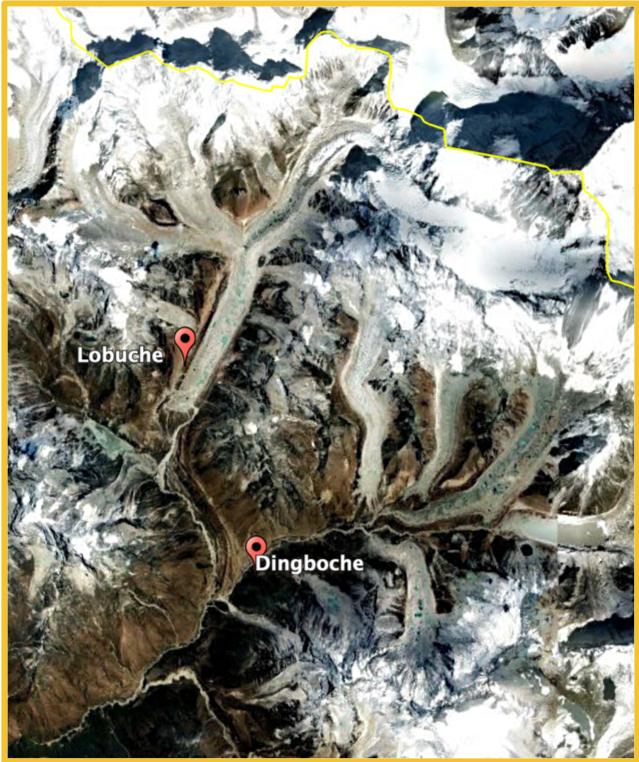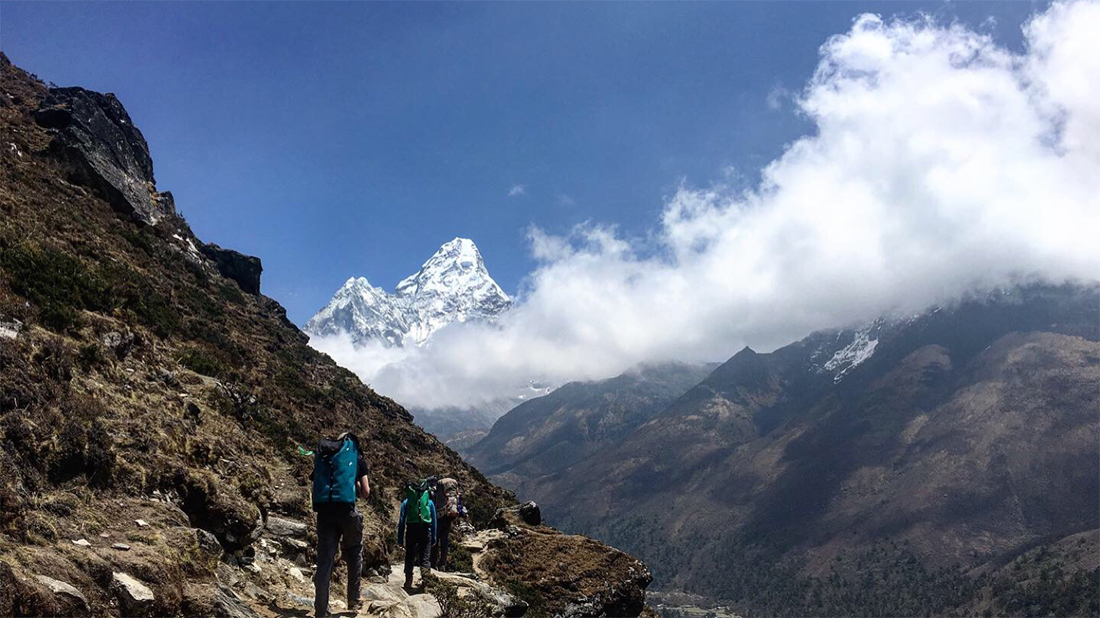By Elena Bruess
Medill Reports
Near the peaks of Mount Everest – towering some 5.6 miles above sea level – the ancient Khumbu Glacier is melting.
Never before in the last 70 years has the massive ice rock melted more quickly than at present. It is losing thickness at an unprecedented rate – about 131 feet in the last 10 to 15 years, to be exact. And the Nepali communities surrounding the Khumbu are feeling the consequences.
The impact of the depleted glacier could eventually reduce access to freshwater for these areas and could hinder Nepali guides who are dependent on the tourism from Mount Everest.
Rapidly melting glaciers result in floods or, as geoscientist Jeff Severinghaus calls it “a glacial lake outburst flood” – a gradual accumulation of meltwater from a receding glacier which often forms a lake in the space previously occupied by the glacier.
Severinghaus is a professor of geosciences at the Scripps Institution of Oceanography at University of California, San Diego. He has worked extensively with the ice sheet in both Greenland and Antarctica, focusing in ancient climate to better predict where man-made global warming is taking us now. He spent a year and a half in Nepal on a rural development project and continues to understand many of the climate implications experienced in the region.
“The problem is that those lakes are dammed up by ice or mud or a mixture of both. Neither which is very solid,” Severinghaus said, while participating in the Comer Climate Conference in southwestern Wisconsin this fall. “All of sudden the dam bursts after years following the glacial retreat and you get a massive amount of water roaring down these steep mountain valleys at very high speeds. They are extremely violent. People get killed and houses are destroyed.”

Nepali towns near the base of the Mount Everest have long depended on the meltwater from the Khumbu Glacier. Both it and the annual monsoon season give communities in the area the freshwater supply that they need to survive. Now that the glacier is receding, the real question going forward is how much and how fast will the melt occur. Depending on the accelerating pace, the glacial recession can have even more serious implications for the area.
Laura Mattas, a climate science and geochemistry masters candidate at University of Maine, climbed seemingly into the clouds to study the Khumbu Glacier this last summer. She researched the movement of the glacier historically and presented her findings at the Comer Conference. According to Mattas, mountain guides are one of the best jobs in the region. Yet the impact the damage could incur a big economic shakeup for those who depend on the area for this kind of work.
“A lot of the economy of Nepal is based around tourism and what they do there is extremely different than what we know in the US,” Mattas said. ”The porters [mountain guides] are what a lot of the people become and that is an extremely taxing job. So they respond to climate change in knowing how it will impact tourism.”
In adapting to the changing glacier, Nepal might not be centered on climate change mitigation strategies in very rural areas, but there has been some progress in installing flood warning systems. A sensor placed up the mountain will send a signal down a few miles telling communities a flood is on the way and to get to higher ground. According to Severinghaus, this has saved a lot of lives.
Yet, the impact of the Khumbu Glacier melt might be harder to mitigate in the future. It is somewhat unclear how the area will change as the glacier loses more and more volume.
“It’s a little hard to say. It’s true that globe will be getting warmer and warmer so that means there will be more melting,” Severinghaus said. “But eventually, the glaciers are so reduced in volume they won’t even make much in the way of melt.”
Either way, the foremost question for these communities still remains, Mattas said.
“If the glacier is retreating more than it ever has, what does this mean for the area and more importantly, will it be able to rebuild?”


